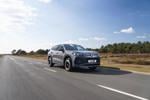Likewise, in 1998 almost 50% of fleets defleeted cars at four years or more, compared to just 21% in 1990. These profiles suit the used car market, where 75% of retail demand is for used cars over four years old, according to MFBI. It has identified greater fluctuation in used car values following the introduction of the twin plate change system, calculating that the historic 7% premium enjoyed by the newer registration prefix over its predecessor in the used car market is now only worth 3%.
Robert Macnab, MFBI partner, said: 'The traditional August price rise will in future be replaced by a smaller price rise in September, followed by a reduction in values until January, when the trade can be expected to begin sourcing for the spring sales period.' He compiled the report that has traced used car values through the 1990s, explaining the dramatic upturn in 1997, and the subsequent decline. Volume demand for used cars reached 6.73 million units in 1997, fuelled by building society windfalls and maturing Tessas, driving prices higher because of a shortage of used stock, following the low annual sales of 1990-93.
MFBI predicts that volume demand will rise again to a peak of 7.15 million units in 2002, before declining to 7.1 million in 2005, and forecasts a 21% increase in average unit values between 1999 and 2005 to £5,800 from £4,785 today, taking the value of the total used market to £41.18 billion compared to £30.39 billion.












Login to comment
Comments
No comments have been made yet.